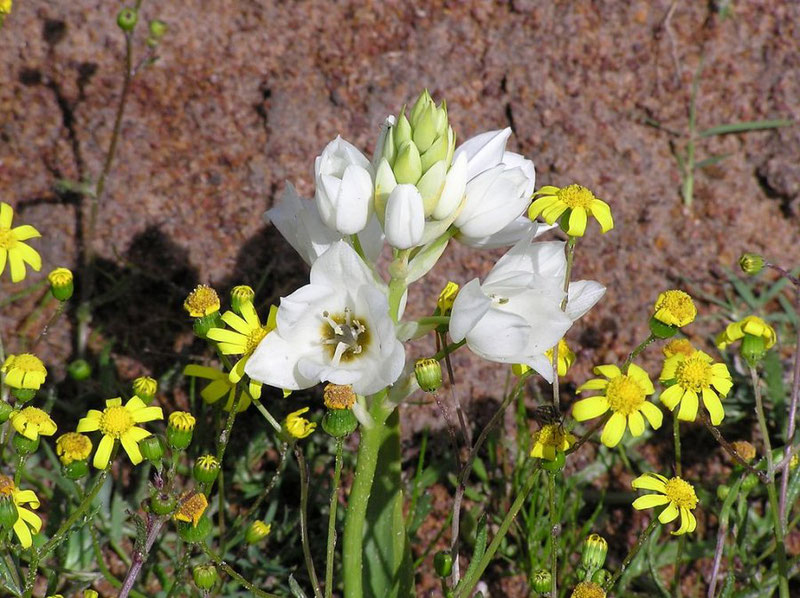Ornithogalum thyrsoides
 Image: Winfried Bruenken (Amrum) [CC BY-SA 2.5 (https://creativecommons.org/licenses/by-sa/2.5)], from Wikimedia Commons
Image: Winfried Bruenken (Amrum) [CC BY-SA 2.5 (https://creativecommons.org/licenses/by-sa/2.5)], from Wikimedia Commons
Description
First described in 1776, this beautiful long lasting white flower is now cultivated as a valuable cut-flower. "The species is found in vleis, sandy flats, lower mountain slopes and in disturbed ground" but prefers moist fertile soil.The flowers follow the light (phototrophic) and take up the colour of the food dye the flower is put in.
"The Afrikaans vernacular name tjienkerientjee is the simulation of the chink sound made when fresh stalks are rubbed against one another and is based on the name given by Thunberg in 1772 as tinkerintees... The species was introduced to gardens in Holland before 1700 and is known to cultivation in Europe from about 1750" and was used to treat diabetes but is poisonous to cattle and a skin irritant.
Propagation instructions - cuttings
Chincherinchees are propagated mainly by separation of bulbils from bulbs and to a lesser extent by seed germination. Good soil, water and temperature conditions support large sized flowers. Plants growing in soil lacking water and nutrients produce smaller flowers. The species would do well in a sunny aspect with free air circulation, well-drained soil and slightly sloping ground in gardens.
Sources and references
Scientific name
Ornithogalum thyrsoides
Common name(s)
Chincherinchee
